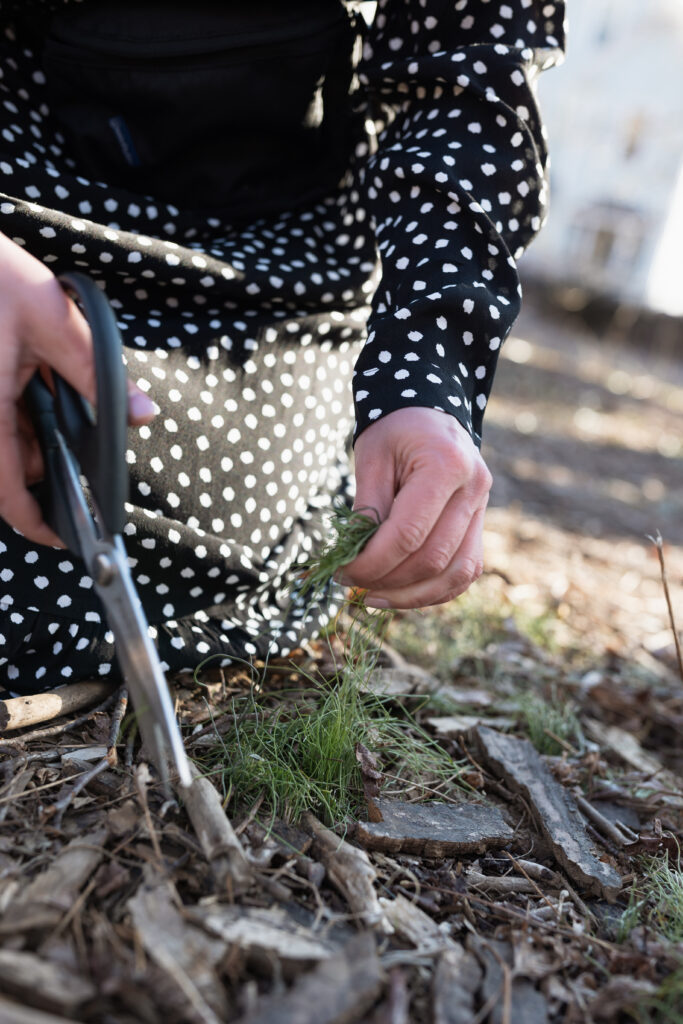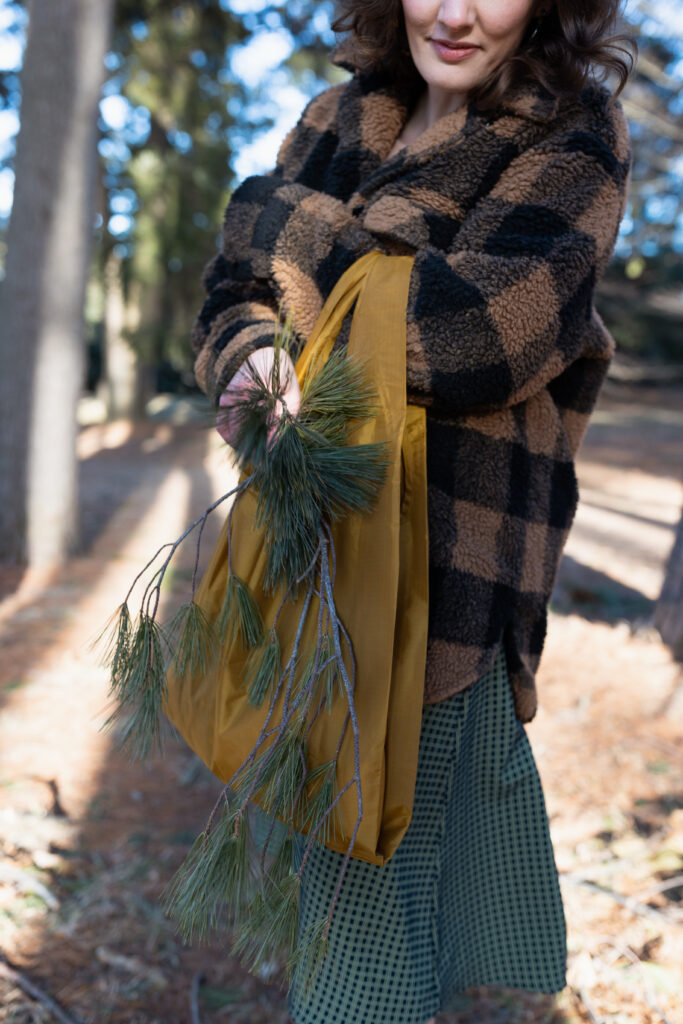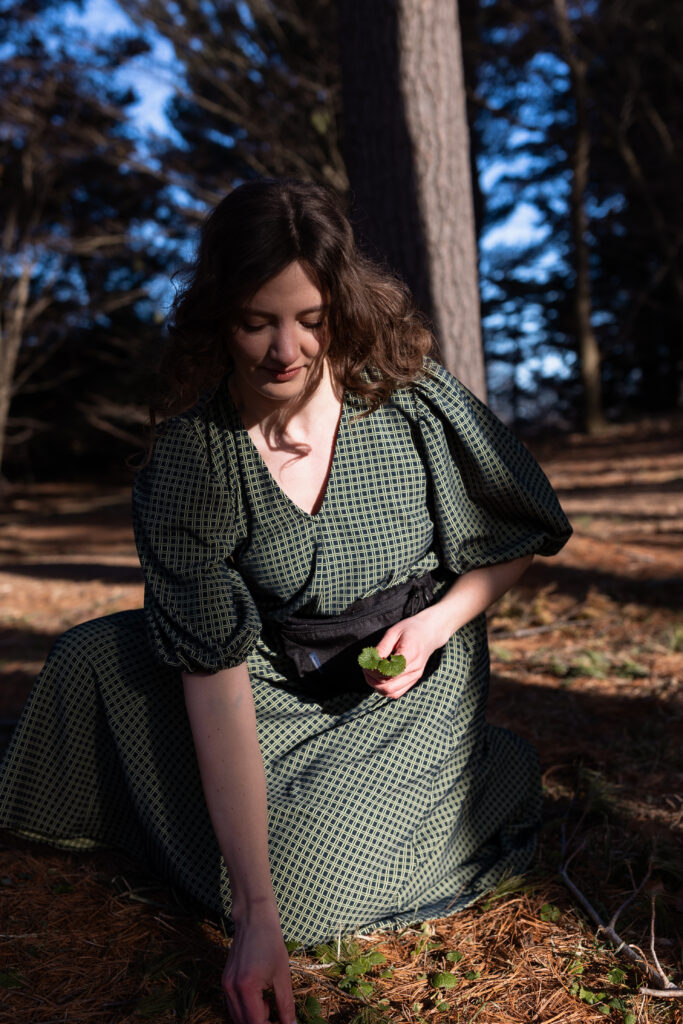This post may contain affiliate links, which means that I may receive a commission if you make a purchase using these links.
The ground is slowly thawing here in the Northeastern part of the United States, and hobbyist food foragers are eager for the bounty that warmer days provide.
The month of March, straddling winter and spring, can be particularly frustrating; teasing us with a few warm days followed by a bitter frost.
The ground can seem barren despite the more temperate breeze. The lush greenery we associate with the height of spring has certainly not yet arrived.
To the naked eye, it doesn’t look like there is much food to potentially collect. Yet, if we look closer there are actually a number of beautiful, forageable plants to find in New England in the early spring.
Here are a few of my favorite forageables to eat, cook and otherwise work with during this time of transition into spring.
Note: Please use caution when foraging plants for consumption. Do not eat foods you are not comfortable with identifying.

Chives (Allium schoeneprasum)
You are likely familiar with chives as the common culinary herb. But did you know the wild chive grows abundantly in temperate regions around the globe? Lucky for us, wild chives are one of the first edible plants to appear every spring.
If you don’t know what you’re looking for, chives can look a lot like grass–especially in the early spring. Unlike grass, chives will have hollow, tubular leaves. If you’re unsure, break off a little piece of the leaf and give it a whiff. Chives will have the unmistakable oniony scent of the Allium family.
One of my favorite simple things to make with wild chives is chive butter. To make chive butter, finely chop a few chives and mix with room temperature butter. Spread your chive butter on a fresh piece of sourdough bread. Heaven.
Birch sap
Why let maple syrup get all the fame? Just like maple syrup is the boiled down product, so too can you reduce birch sap into a sweet syrup.
Birch sap also tastes delicious straight from the tree, and has been used traditionally as a medicinal beverage for strength after a long winter.
Birch sap runs a little later than maple sap, making this the perfect early spring foraging project.
Find a healthy tree that is at least 8 inches in diameter around the base. Check to make sure the sap is flowing by inserting a sharp knife upwards a few centimeters into the tree. When you remove the knife, the tree should ‘bleed’ a little sap.
To collect a small amount of sap, you can cut off a branch and secure a bottle to the end. Leave the bottle for a few hours. You should have enough to sip when you return.
If you intend to make syrup, you will need a much greater volume of sap. This will require tapping the tree.
To tap a birch tree, drill a small hole slightly upwards a few centimeters into the tree. Insert a pipe or straw that fits the hole you created. The pipe should direct sap into a collection vessel secured below.
Birch sap season lasts until green leaves appear on the trees, usually sometime in April.


Pine Needles (Pinus strobus)
Pine is the quintessential evergreen of the Northeast. But, did you know, pine needles are actually a very useful plant in the home and the kitchen?
Pine needles are purported for their high levels of vitamin C–up to three times the amount found in oranges.
Pine needle tea is a traditional preparation to extract pine’s healthy goodness. Just collect, chop and steep a couple of tablespoons of pine needles in water for at least 5 minutes, like you would tea.
Another fun culinary use is to make pine sugar. Blend up equal parts pine needles and sugar until the needles are incorporated and the mixture is uniformly green. This is excellent in holiday cookies or as the sugar rim for festive cocktails.
Be careful identifying this one. Some conifers are known to be toxic. There are some concerns around certain varieties of pine (Ponderosa pine, for example). There is also a recommendation to avoid pine if you are pregnant. Stick with Eastern White Pine (Pinus strobus) if you have concerns.
Nettle (Urtica dioica)
Stinging nettle gets its name from the painful irritation it causes when touched. Tiny hairs on the stem and underside of the leaves act as little needles that penetrate the skin and inject chemicals that cause a stinging sensation. Not fun.
So why in the world am I encouraging foraging (nevermind eating) nettles?
Because with great pain, comes great reward. (JK, just wear protection!) Nettles are extremely high in vitamins and minerals. I try to drink nettle tea daily for skin and hair health.
Nettles can be harvested in the early spring with thick gardening gloves. Leaves must be cooked or dried to deactivate the stinging.
Try using nettle leaves in a daily nutritritive tea. You can also get creative in the kitchen and use nettle in soups, frittatas or in any recipe as a replacement for spinach.


Garlic Mustard (Alliaria petiolata)
Garlic mustard is one of the earliest greens to show in New England. They may still be quite young around mid-March, but I don’t feel bad plucking with abandon because garlic mustard is actually an invasive species.
Once you get proficient at identifying garlic mustard’s kidney-shaped leaves, you’ll realize it’s quite ubiquitous.
Perhaps the best way to identify garlic mustard is by its smell. A crushed leaf between your fingers will indeed smell like garlic.
True to its scent, garlic mustard does well in culinary uses where you want to impart a gentle garlicky flavor. (It’s not as pungent as real garlic). My favorite application is making garlic mustard pesto. Just replace basil with garlic mustard in your favorite pesto recipe.
Follow me on Instagram for more of my foraging adventures this spring.
I want to hear from you! What are your favorite plants to forage in the early spring?
